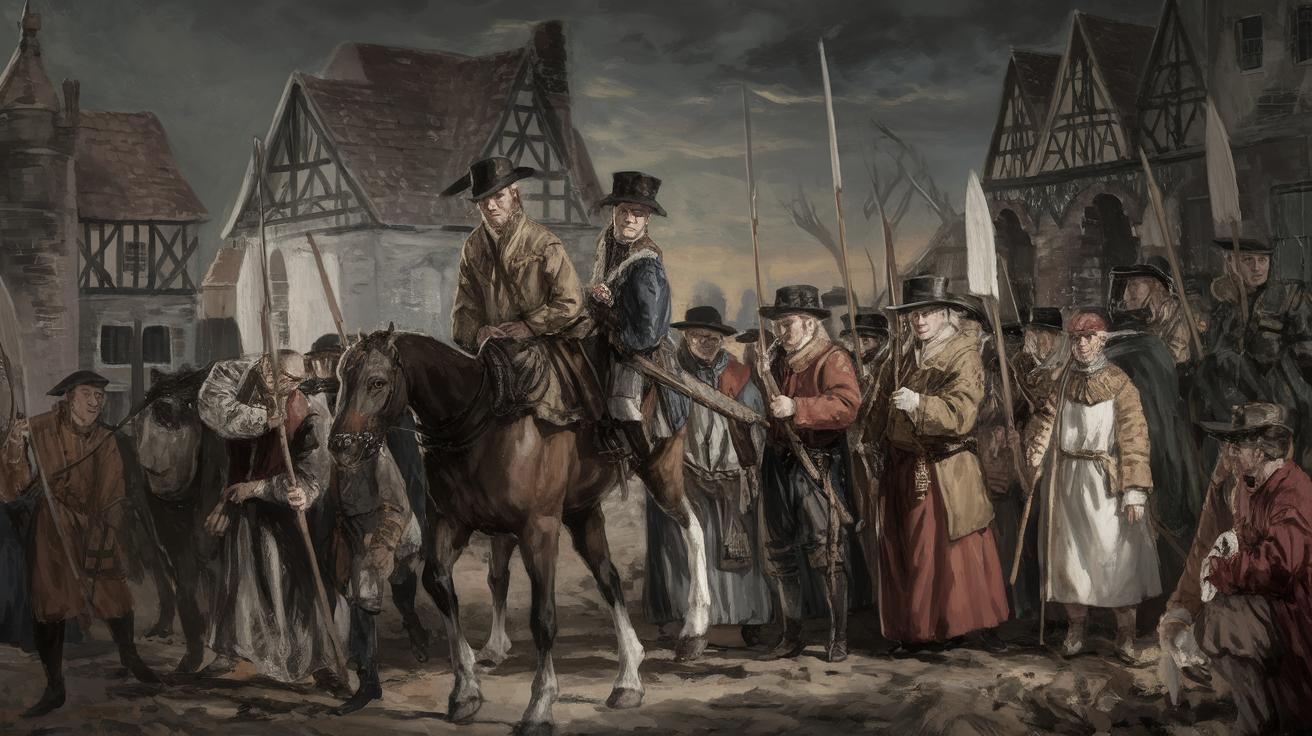The Black Death: A Historical Overview
The Black Death, a calamitous event in the history of humanity, is synonymous with devastation and whirlwind change. Sweeping across continents in the mid-14th century, it decimated populations and reshaped societies in its wake. Understanding the Black Death involves delving into its various aliases, tracing its origins, distinguishing its causes, recognizing its symptoms, and assessing its casualties and broader impacts. This blog post explores these facets, offering a comprehensive picture of a pandemic that, despite its historical distance, still captivates the modern imagination. Join us as we unpack the immense tragedy of the Black Death and its imprint on Europe and beyond.
What are other names for the Black Death?
The Black Death is known by several other names that reflect the gravity of its impact and its symptoms. Initially referred to as the “Great Mortality,” the term emphasizes the widespread mortality and grim fatality rate that the pandemic inflicted upon the population in the 14th century. This name is apt, given the severe and indiscriminate nature of the epidemic.
Additionally, it is often called the “Bubonic Plague” due to the characteristic buboes, or swollen lymph nodes, that were among the most visible symptoms. Over time, “Black Death” became its most popular moniker, derived from the blackened appearance of flesh caused by subdermal hemorrhages, solidifying its image in collective memory as a period shrouded in darkness and despair.
Where did the Black Death originate?
Tracing the origins of the Black Death leads us to the steppes of Central Asia, a region theorized to be the initial epicenter of the pandemic. The plague is believed to have entered Europe via trade routes, carried by fleas living on rats that stowed away on merchant ships. As these ships docked at Mediterranean ports, they inadvertently sowed the seeds of contagion across Europe’s burgeoning trade routes.
From this foothold, the disease rapidly spread along trade networks, proving that no boundary was impenetrable to its reach. The integration of global commerce facilitated its swift dissemination, highlighting the interconnected nature of the medieval world and the role of human activity in the spread of disease.
What caused the Black Death?
The Black Death was primarily caused by the bacterium Yersinia pestis. Transmitted through the bite of infected fleas residing on rats, this pathogen wreaked havoc on an immunologically naïve population. The bacterium thrives under specific conditions which were prevalent in Europe during the 14th century.
Unsanitary living conditions, coupled with a lack of understanding of infectious disease transmission, created a perfect storm for Yersinia pestis proliferation. The bacteria’s virulence was exacerbated by crowded urban centers and poor health infrastructure, ensuring that once introduced, the plague could spread rapidly and with lethal efficiency.
What were the symptoms of the Black Death?
The Black Death manifested in a range of distressing symptoms that heralded the onset of the disease. Initial signs typically included fever, chills, headaches, and a general sense of malaise. However, it was the swollen and painful lymph nodes, commonly referred to as buboes, that were most indicative of the bubonic form of the plague.
As the disease progressed, individuals might suffer from vomiting, diarrhea, and bleeding under the skin, producing dark splotches—an ominous sign of internal hemorrhaging. Mortality rates were alarmingly high, with most succumbing to the disease within a week of the first symptoms, underscoring the relentlessness of the plague.
How many people died during the Black Death?
The Black Death exacted a staggering toll on the global population. Estimates suggest that between 75 to 200 million people perished, amounting to 30-60% of Europe’s population at the time. This monumental loss of life led to significant social, economic, and cultural upheavals across the continent.
Cities were transformed into ghost towns, where the dead often outnumbered the living. The sheer magnitude of the demographic collapse intensified the pandemic’s impact, altering the trajectory of societies and influencing future generations in profound ways.
How did the Black Death affect Europe?
The effects of the Black Death on Europe were profound and long-lasting. Economic turmoil ensued as labor shortages crippled production and trade. As surviving laborers became scarcer, their bargaining power increased, setting the stage for shifts in the social structure, such as the decline of the feudal system.
Culturally, the plague left an indelible mark on art and literature, with themes of death and mortality permeating the creative expressions of the time. In the realm of public health, the catastrophe precipitated advancements as societies sought to better understand and mitigate future outbreaks. Thus, while a devastating calamity, the Black Death also acted as a catalyst for societal transformation and progress.
Summary of main points
| Topic | Details |
|---|---|
| Other Names | Great Mortality, Bubonic Plague, Black Death |
| Origin | Central Asia, spread via trade routes to Europe |
| Cause | Yersinia pestis bacteria, spread by infected fleas on rats |
| Symptoms | Fever, buboes, vomiting, diarrhea, internal hemorrhaging |
| Casualties | 75-200 million deaths, 30-60% of Europe’s population |
| Effects on Europe | Economic collapse, social shifts, cultural impact, public health advancements |
